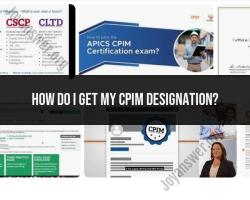What is the best way to introduce a new product?
Introducing a new product successfully involves a well-planned and executed strategy. Here are some best practices for mastering the art of new product introductions:
Market Research and Target Audience: Start by conducting thorough market research to understand customer needs, preferences, and pain points. Identify your target audience and tailor your product to meet their specific requirements.
Unique Value Proposition: Clearly define the unique value proposition of your new product. What makes it different from existing solutions in the market? How will it benefit customers? Communicate this effectively.
Product Development: Ensure that the product is well-designed, high-quality, and meets or exceeds customer expectations. Test the product rigorously before launch to identify and address any issues.
Create a Launch Plan: Develop a comprehensive launch plan that outlines the goals, timeline, budget, and key activities for the product launch. Assign responsibilities to team members and establish a timeline.
Build Anticipation: Create a sense of anticipation and excitement around the new product. Use teaser campaigns, social media teasers, and email marketing to pique interest and generate curiosity.
Targeted Marketing: Tailor your marketing efforts to reach your target audience effectively. Use a mix of online and offline marketing channels, including social media, email marketing, content marketing, and traditional advertising if applicable.
Leverage Influencers: Collaborate with industry influencers or experts who can endorse and promote your new product. Their credibility can boost your product's visibility and credibility.
Early Access and Beta Testing: Offer early access or beta testing opportunities to a select group of customers. Their feedback can help you refine the product and identify any issues before the official launch.
Educational Content: Create informative content that explains how the new product works, its benefits, and how it solves specific problems. Use blog posts, videos, webinars, and FAQs to educate potential customers.
Pre-Sell or Pre-Order Campaigns: Consider offering pre-sale or pre-order campaigns to generate initial sales and gauge demand. Offer incentives such as discounts or exclusive access to encourage early adoption.
Launch Event: Host a launch event, either in-person or virtually, to unveil the new product. Invite key stakeholders, media, and potential customers. Use the event to showcase the product's features and benefits.
Customer Support Readiness: Ensure that your customer support team is well-prepared to handle inquiries and provide assistance related to the new product. Prompt and helpful customer support is crucial.
Gather Feedback: After the launch, actively seek feedback from customers. Use surveys, reviews, and customer interactions to understand how the product is being received and make improvements accordingly.
Continuous Promotion: Keep promoting the product beyond the initial launch. Develop a long-term marketing strategy to maintain interest and sales momentum.
Monitor Metrics: Use key performance indicators (KPIs) to track the success of your product launch. Monitor metrics such as sales, customer feedback, website traffic, and conversion rates to assess the effectiveness of your strategy.
Adapt and Iterate: Be prepared to adapt your strategy based on the results and feedback you receive. Continuously iterate and improve your marketing and product offerings to stay competitive and meet evolving customer needs.
A successful product launch requires careful planning, effective communication, and a customer-centric approach. By following these best practices and staying agile in your approach, you can increase the chances of a successful new product introduction.
Introducing a New Product: Best Practices and Strategies
Here are some best practices and strategies for introducing a new product:
- Do your research. Make sure you understand your target market and what they need and want. This will help you develop a product that meets their needs and solve their problems.
- Develop a strong brand identity. Your brand identity should be clear, concise, and memorable. It should also reflect the values and personality of your product.
- Create a compelling marketing campaign. Your marketing campaign should generate excitement and awareness for your new product. It should also highlight the key features and benefits of the product.
- Make it easy for customers to buy your product. Make sure your product is available for purchase through a variety of channels, both online and offline.
- Provide excellent customer service. Be responsive to customer inquiries and resolve any issues quickly and efficiently.
Successfully Launching a New Product to the Market
Here are some tips for successfully launching a new product to the market:
- Start early. Don't wait until the last minute to start planning your product launch. Give yourself plenty of time to develop a marketing plan, create promotional materials, and build excitement for your product.
- Target the right audience. Make sure you are targeting your marketing efforts to the right people. This will help you reach the people who are most likely to be interested in your product.
- Create a strong value proposition. Your value proposition should clearly articulate the benefits of your product and why customers should choose it over the competition.
- Generate buzz and excitement. Use a variety of marketing channels to generate buzz and excitement for your product launch. This could include social media, email marketing, and public relations.
- Make it easy to buy. Make sure your product is easy to purchase through a variety of channels, both online and offline.
Effective Approaches to Introducing a Product
Here are some effective approaches to introducing a new product:
- Product launch event. A product launch event is a great way to generate excitement and awareness for your new product. You can invite potential customers, media outlets, and other stakeholders to your event.
- Social media launch. A social media launch is a great way to reach a wide audience with news about your new product. You can create teaser posts and videos, run contests and giveaways, and use relevant hashtags.
- Email marketing launch. You can use email marketing to send targeted messages to potential customers about your new product. You can include information about the product's features and benefits, as well as a call to action, such as a link to your website or a special offer.
- Public relations launch. You can use public relations to generate media coverage for your new product. You can write press releases, pitch stories to journalists, and host media events.
The best approach for introducing your new product will depend on your specific product and target market. However, by following these tips, you can increase your chances of a successful launch.













